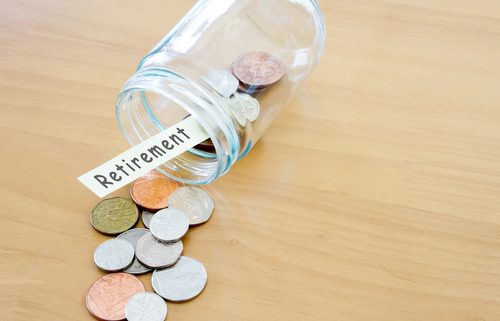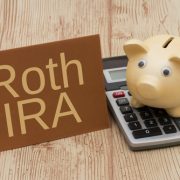Nearly Half of 55-Year-Olds Have No Private Retirement Savings in Self-Directed IRAs
When it comes to retirement savings, there really are two Americas: In one America, the average 401(k) balance is bouncing around $100,000, according to research from Fidelity Investments.
In the other America, taxpayers are heading into their retirement years with nothing in savings. Of those aged 55 years and older, nearly half – 48% – had nothing saved in any retirement account to help secure an income for them in retirement. That includes employer-sponsored retirement accounts like 401(k)s as well as individual accounts like IRAs and Roth IRAs, including Self-Directed IRAs.
That’s a modest improvement from 2013, when the figure was 52 percent – but still indicates that younger baby-boomers are woefully unprepared for their retirement years, when many of them will not be able to earn an income through work.
Part of the problem is access: 2 out of 5 workers in this age cohort who do not have savings of their own do not have access to a traditional defined benefit pension plan – in which an employer guarantees them a certain predictable monthly payment based on what they earned in their years of service with the employer – most frequently a government agency, in this day and age, as few private sector employers continue to maintain traditional defined benefit pensions.
This indicates that some of these workers will have at least some pension income to fall back on in retirement. But 29 percent of Americans age 55 and older does not have access to either an employer-sponsored defined benefit plan nor to savings of their own in a 401(k), IRA, Self-Directed IRA or other retirement account.
According to the federal General Accounting Office, the median household retirement savings of those age 65 to 74 had $148,000 saved in 2015 – the last year of data upon which the report was based. This would translate to a conservative annuity income of about $649 per month.
Meanwhile, the Average Social Security benefit in 2019 is about $1,422 per month. Which means the average senior without retirement savings or access to an employer-sponsored pension is looking at retirement income of around $2,000 per month, or $24,000 per year.
If you are behind the 8-ball, what can you do about it?
First, if you have access to an employer 401(k) with a match, contribute at least enough to maximize your employer match. If your employer is matching 25 cents of each dollar you contribute, up to 3 percent of your pay, then contribute 3 percent of your pay. The immediate return of 25% per dollar of contribution up to that threshold is solid in any investment endeavor, and is a worthy use for your next dollar of savings at any time
Second ruthlessly attack credit card debt. With average interest rates of 14.14% for existing accounts and 19.24% for new offers, and average credit card debt per household of $8,292. At the 19.24 rate, that frees up $133 per month in interest charges alone.
The same goes for high-interest, non-deductible consumer debt such as car loans, appliance loans, loans for your bass boat, department store and gas cards, and the like. Zeroing it out will save interest and free up cash flow from debt service to saving and investing. It’s like moving from defense to offense!
Next, try to maximize contributions to Self-Directed IRAs or Roth IRAs. If you want to explore holding IRA assets in non-traditional or alternative asset classes, such as real estate, gold and precious metals, tax liens and certificates, private lending, LLCs or partnerships, call American IRA, LLC at 866-7500-IRA (472).
As of 2019, if you meet certain income requirements, you can contribute up to $6,000 in any combination of traditional and Roth IRAs. If you are age 50 or older, you can contribute an additional $1,000, for a total of $7,000 per year. And if you are married, you can double up, using a Spousal IRA.
Once that’s done, go back and maximize your 401(k) or SIMPLE IRA contributions within your employer’s plan, or open up your own SEP (Simplified employee pension) or Solo 401(k) plan to handle self-employed income or income from your own owner-operated corporation.
Whatever you do, do it with a sense of urgency. You may think you will be working well past age 65, which helps. But many people simply don’t have that option. Business-cycle-related layoffs, restructuring, an increasingly out-of-date skill set and medical problems mean most people are forced out of the work force involuntarily.
So, if you are among those with little or nothing put away for retirement – at any age, it’s time to take decisive action.
Interested in learning more about Self-Directed IRAs? Contact American IRA, LLC at 866-7500-IRA (472) for a free consultation. Download our free guides or visit us online at www.AmericanIRA.com.










